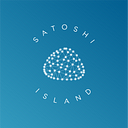Coconut Crabs & Satoshi Island
Addressing misinformation relating to coconut crabs and our voluntary wildlife conservation area.
A previous real estate company marketing the island once described it as the “last stronghold for endangered coconut crabs.” While this statement may have been used to promote the island, it is important to clarify the actual status of the wildlife. When we acquired the island, the coconut crab population, along with other wildlife such as birds and fish, had been severely diminished due to years of overhunting and fishing.
Since taking stewardship of the island, we have implemented significant conservation measures to protect and restore these populations, ensuring the island remains a sanctuary for its native species. Our focus has been on creating sustainable practices that genuinely benefit the environment and align with the long-term goals of preserving the island’s natural ecosystem.
As this statement has been used out of context in some instances, here are the facts relating to this information.
- Coconut Crabs are not on the endangered species list.
- Coconut Crabs are found on almost all the islands of Vanuatu.
- Coconut Crabs can also be found in many countries in the Pacific, Indian Ocean, Australia, and on the islands off the east coast of Africa.
- Coconut crabs are considered a delicacy in Vanuatu and as such are hunted for food, countrywide.
- To protect Coconut Crab populations in Vanuatu, the hunting of them is protected by law based on size, location and time of year.
- When we arrived on the island, there were almost no coconut crabs, birds or fish around the reef as they had all been decimated by years of hunting and fishing.
- Poaching on the island continued after the island was purchased and so efforts were made to prevent this.
- In an attempt to eliminate poaching, a voluntary wildlife conservation area was set up to make it possible to legally punish poachers for hunting any and all wildlife on the island and surrounding reefs, regardless of size or time of year.
- This conservation area does not in any way affect the building or development of the island. It is specific to the hunting of wildlife.
- In combination with the wildlife conservation area, we also made contact with the chiefs of local tribes to set up educational programs to try and persuade local people not to hunt the coconut crabs until they were of breeding age, so the population could increase countrywide. There was a lot of success with this effort.
- Through the efforts made to establish and maintain our reserve, the wildlife population on the island has increased and there is now a noticeable population of crabs, birds and fish.
- Much of the hunting has now stopped, partly because of educational programs sponsored by Satoshi Island, and partly due to Satoshi Island being one of the largest employers in the region. The jobs that we provide to local people give them other options than poaching and even if they are not directly employed by Satoshi Island, people from their village (family) will be and so continuing to hunt on the island would come with negative social consequences.
- Unfortunately, we have been unable to prevent all poaching on Satoshi Island island as it is simply not possible to keep an eye on all the access points due to the small population of people working on the island.
- Increasing the population of people on the island as the project is developed will help increase the wildlife populations as poachers will no longer be able to find ways onto the island without being detected.
- The wildlife conservation area will also remain in place, making it illegal for Satoshi Islanders and locals to hunt or fish on the island. Fishing will only be permitted in the deep waters around the island by boat, not on the reef from the land.
- The bulk of the natural habitat will remain preserved and wildlife nature strips between the sea and the centre of the island are built into the island design.
- The total amount of forest on the island that will be affected by the development is expected to be around 25%. To put the size into context, this area is around 0.02% of the forest on the next closest island and 0.006% of the forests in the region.
Conservation is very important to the Satoshi Island project and we will continue to act responsibly to benefit the nature of the island and the lives of the local people in Vanuatu.
